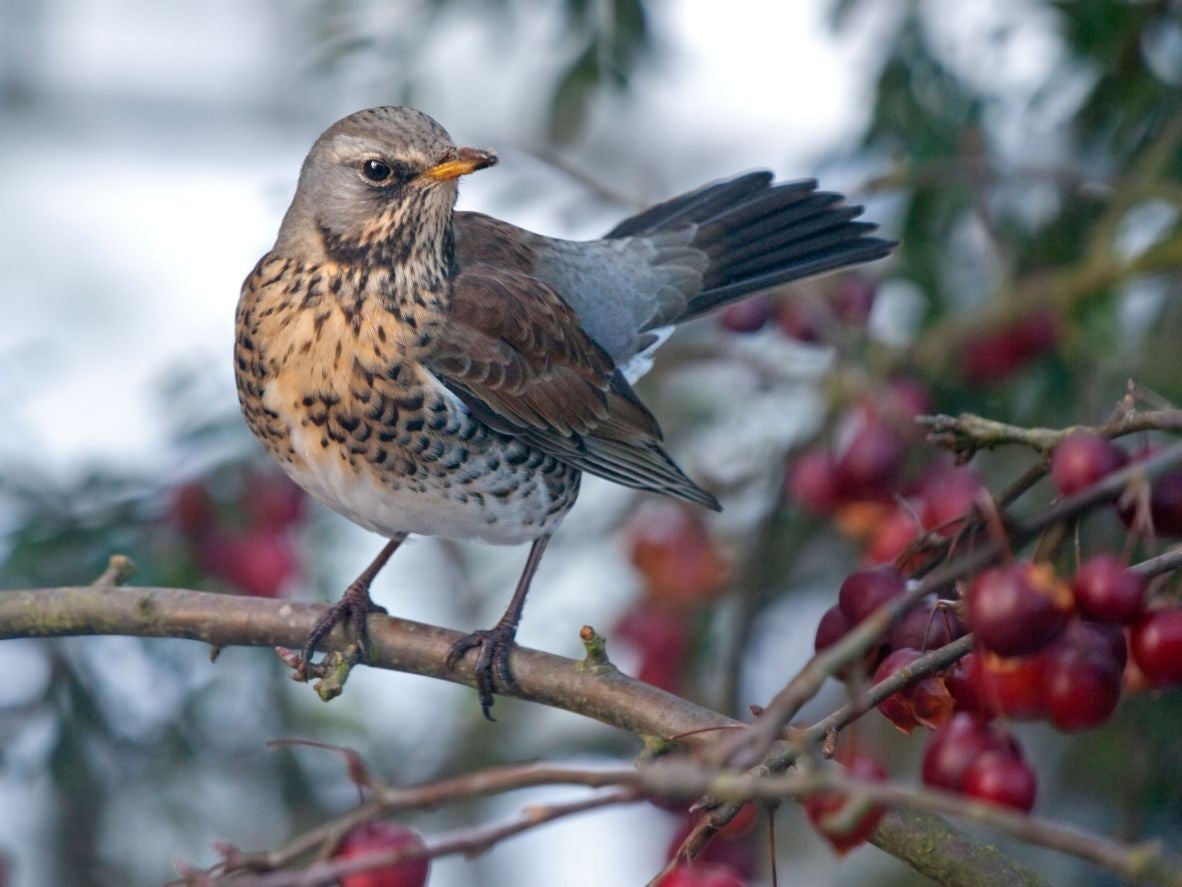Soaring emotion in the silent music that is falling snow
They were not only wonderfully colourful but wonderfully exotic

Some pleasures, some joys, if you like, are universally understood: perhaps falling in love is at the top of the list.
Most people could empathise with that. Other forms of elation, however, may be shared or understood only by more limited or specialised groups. Cynics might say: by nerds.
For example, when, in 1987, the botanist Simon Leach rediscovered a small, nondescript, pallid-green plant long thought extinct in Britain, Atriplex pedunculata, or stalked sea purslane, his heart was beating so fast, he told the wildlife writer Peter Marren, that he had to sit down in the Essex saltmarsh where he found it.
You’d probably need to be a specialist to get that heartbeat (and the consequent wet bottom); and I’ve been musing on this, in considering a recent wildlife sighting which left me exhilarated. I’ve been wondering if my reaction was generally understandable, or if it would seem completely excessive, not to say incomprehensible, to a large part of the population.
It concerns winter birds. First, an apology. Having made the point that birds are the best part of winter wildlife, and having then written about them for the past two weeks running (first blackcaps, and then woodcock), it may seem rather repetitive to return to the subject yet again, but I am so taken with what I saw that I can’t resist it.
It was in the snow of last weekend, and it was when the snow was falling. I’ve only recently come to realise that while all new snow transforms even the ugliest parts of the world, snow which is actually falling is more atmospheric still: it’s almost the equivalent of silent music. And I looked out of the window on to our garden and saw, in the midst of the gentle, soundless white cascade, three medium–sized birds in the apple tree, silhouetted black against the sky, which struck me as different: they were extraordinarily fat.
I have a slow brain compared with most birders, but even I realised in an instant what they were: fieldfares, the big thrushes from Scandinavia which fly to Britain in the autumn. They are one of two “winter thrushes” in Britain – the other being the more delicate redwing – which cross the North Sea to get away from Norway’s long freeze.
I’ve long admired fieldfares, with their handsome coloration: an ash-grey head, a chestnut-brown back, a bright yellow bill and speckled flanks. But I’ve never seen them in our pint-sized suburban garden – I’ve never even seen a song thrush in it – and in what seemed like an extraordinary privilege, we were blessed with a flock of eight.
They’d been attracted by the bright red berries on our cotoneaster bush, and in the binoculars I quickly grabbed, each bird filled the eyepiece. I marvelled again at their dun colours, grey and brown so subtly pleasing, but in such close-up I also noticed something for the first time: the throat is a thrilling orange, which runs into the yellow of the bill.
They were making a meal of the cotoneaster berries: I watched one bird take 11 of them, one after another without stopping, like a TV addict gobbling crisps on the sofa. Bold birds with big personalities. They appeared not only wonderfully colourful but wonderfully exotic, these visitors from Norway to the London suburbs, scoffing scarlet berries in the silent music of the white flakes.
Snow falling on fieldfares: to me it was the quintessential, supreme image of birds in winter, far eclipsing any cheesy print of a robin on a gatepost, and it was happening a few feet away. I was elated beyond words; I shivered with excitement.
Is that normal? Comprehensible to the population as a whole? Or does it make me a nerd? I don’t know. But that is how it was.
Benyon, I salute you
There was heartening news yesterday that the National Wildlife Crime Unit, which was threatened with abolition under the current massive cuts to police budgets as revealed in The Independent three weeks ago, has been saved.
The NWCU leads the fight against the burgeoning illegal wildlife trade, and much of the credit for its salvation must go to Richard Benyon, the Wildlife Minister at the Department for Environment, Food and Rural Affairs.
Mr Benyon, who has not gone uncriticised, shall we say, in these pages, won the Whitehall battle to persuade a reluctant Home Office to stump up its share of the funding. Congratulations to him; he has done the natural world a singular service.
Twitter: @mjpmccarthy m.mccarthy@independent.co.uk

Join our commenting forum
Join thought-provoking conversations, follow other Independent readers and see their replies